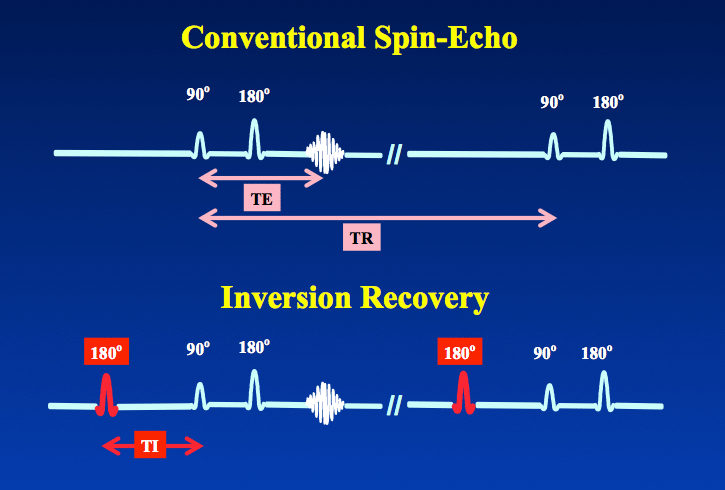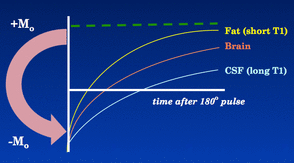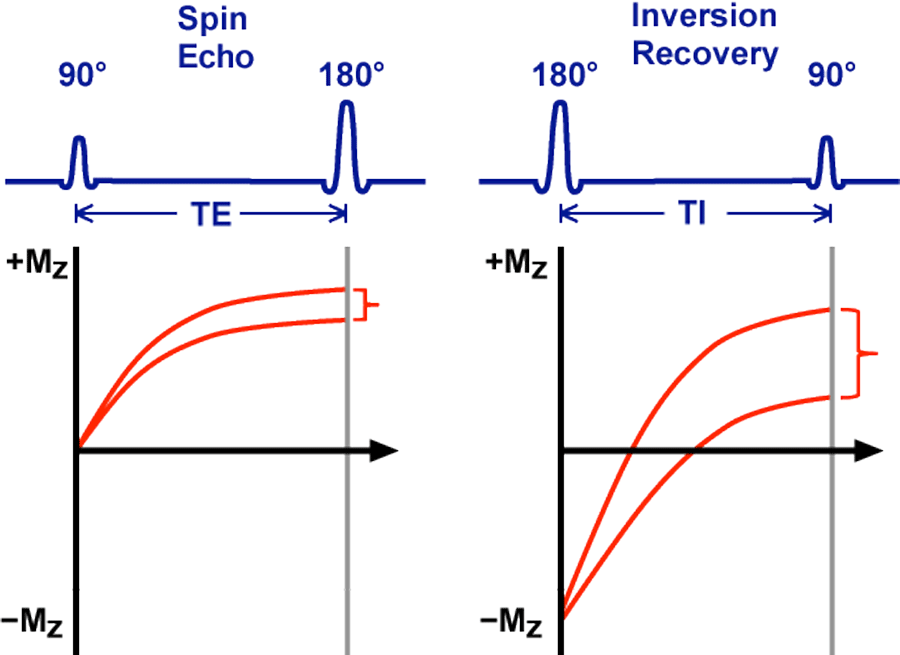Prior to a SE sequence, we can apply a 180-degree pulse. This changes the net magnetic field from $+M_0$ to $-M_0$. No phase coherence is added!
Tissues with different T1 will recover their net magnetic field at different rates.
TI = time of inversion = time from centre of inversion pulse to centre of next pulse (90-degree SE pulse) in the pulse sequence.


Can set TI to time that a particular tissue (e.g. fat) recovers to a net magetic field of zero. When the 90-degree pulse is then applied, that tissue gets no signal in the transverse field. So a "fat suppressed" pulse sequence would choose TI = 0.69 of T1$_\textrm{fat}$.
Recall that $M_z$ is not detected, so T1 cannot be recovered from $M_z = M_0 (1-e^{-t / \textrm{T1}})$.
Instead, we apply the 180-degree IR pulse and delay TI to let tissues with different T1 gain different amounts of $M_z$, which becomes $M_{xy}$ with the next 90-degree pulse. The magnitude of $M_{xy}$ can be recovered.
IR can also be used to increase the contrast between tissues with different T1 since they recover from $-M_0$ toward $+M_0$ at different rates.

But IR is slow.